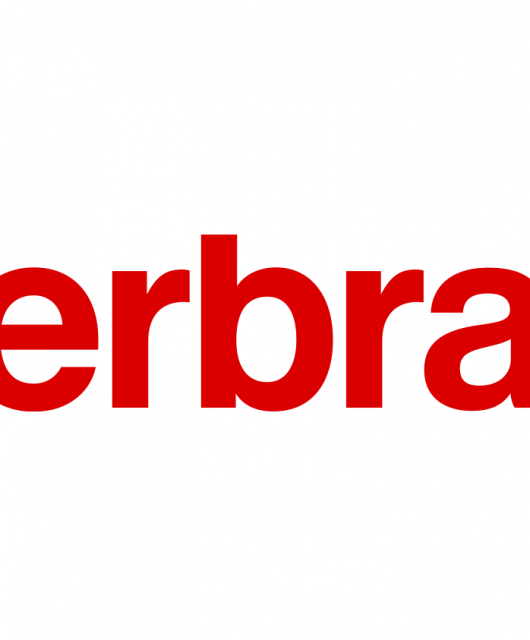Nonprofit organizations are likely to use their brands mainly for fundraising and generating donations, but a growing number of nonprofits are paying attention to developing a more strategic approach towards branding, brand image, brand promise and brand management. The Brandberries interviewed Denise Sabet and Susan Moon, Managing Director and Senior Brand Strategist of Labbrand Brand Innovations, to know what makes up the secret sauce of branding for the social good.
 BB: Many nonprofits continue to use their brands primarily as a fundraising tool, but a growing number of nonprofits are developing a broader and more strategic approach, managing their brands to create greater social impact and tighter organizational cohesion. How does branding for nonprofit organizations differ from branding businesses?
BB: Many nonprofits continue to use their brands primarily as a fundraising tool, but a growing number of nonprofits are developing a broader and more strategic approach, managing their brands to create greater social impact and tighter organizational cohesion. How does branding for nonprofit organizations differ from branding businesses?
DS: Branding is about building perceptions in the minds of stakeholders, and attaching those perceptions to your distinctive brand identity. For businesses, this allows the brand to be able to charge a premium over a generic/unbranded version of their product or service, and also allows them to build brand loyalty to sustain the business revenue over time. This is why brands have a value above and beyond the sum of tangible assets on the balance sheet.
In the process of forming and building a brand, it also necessitates the setting out of a ‘raison d’être’, ideally a differentiated one, as well as delineating the target audiences and the intended messages and tonality to communicate to them. The emotional and functional benefits the customer receives from the brand also need to be identified.
Let’s compare this to a nonprofit organization. The definition of branding for a nonprofit will be the same: to build perceptions. The nonprofit will also need to crystallize its raison d’être, stakeholders, messages, tonality, and benefits. In these regards, branding for businesses and nonprofits have many similarities. However, in the case of nonprofits, the objective is not business revenue but rather donations, both immediate and sustained over the long term, as well as social impact and increased effectiveness in achieving that impact. As Susan points out, the metrics for a nonprofit to measure its branding efforts would differ from businesses: “Rather than sales revenues, the ROI for a nonprofit would also include water wells created, lives saved, high schoolers graduated, etc.”
Another benefit of branding, as indicated in the question asked above, is employer branding and organizational cohesiveness. Here, the benefits of a strong brand in attracting, retaining, and aligning talent towards a shared vision or purpose, will be similar for both businesses and nonprofits. It could even be said that for-profit and nonprofit companies are competing in the same market for talent, thus the importance of branding for a nonprofit should not be underemphasized.
 SM: Nonprofit or for-profit, the brands that people choose to associate themselves with send a message to others about who we are and what we are like. Since nonprofits do not always provide an integral product or service that plays a role in the everyday lives of their customers, people won’t engage with a nonprofit unless they are passionate believers in the brand. In that sense, it is even more crucial that a nonprofit brand embody a mission and purpose that resonates with its customers.
SM: Nonprofit or for-profit, the brands that people choose to associate themselves with send a message to others about who we are and what we are like. Since nonprofits do not always provide an integral product or service that plays a role in the everyday lives of their customers, people won’t engage with a nonprofit unless they are passionate believers in the brand. In that sense, it is even more crucial that a nonprofit brand embody a mission and purpose that resonates with its customers.
BB: What are the top instrumental building blocks of strong nonprofit brands?
DS: 1) Have a Clear Vision: A nonprofit needs to have a clear purpose for why it exists and what it wants to achieve in the world. If the vision is unclear, it will be challenging to build a strong nonprofit brand, and the impacts will also be felt operationally. It may be hard to attract donations, volunteers, manage publicity, and more.
2) Have a Distinctive Identity: Brand identity includes both verbal and visual elements: the name, the logo, the visual identity system such as colors, typography, icons, photography, user interfaces, and more. A nonprofit needs a strong identity to stand out and be easily recognized and remembered. It also needs to be well aligned with your Vision. One of the challenges of the World Wildlife Federation, for example, is that its acronym WWF can be confused with the World Wrestling Federation, and the brand’s visual mark of a panda causes people to perceive their work is focused on pandas only, which is not the case.
3) Be Consistent: Consistency is needed when applying your identity and messaging across touch points and channels. Lack of consistency will dilute understanding of your nonprofit and harm brand recognition.
SM: Be collaborative and shareable: 4) Take a networked approach: The main difference between businesses and nonprofits is that nonprofits do not brand competitively. On the contrary, nonprofits should aim to share knowledge and brand cooperatively, in efforts to collectively make steps toward a shared mission. Nonprofits benefit when they take the approach of strengthening their network as a constellation, rather than trying to be the one bright shining star. A networked approach is one where an organization will do what it takes to connect people more closely and build stronger connections as a result.
5) Blaze the trail in knowledge sharing: The nonprofit brands that democratize philanthropy are the ones that are involving people at all levels, share tools and best practices that are developed through process. Some of the most googled terms usually begin with “How do I … install an inner-tube on my bike / How do I create an Indiegogo campaign / How do I write a TedTalk”, and so forth . The nonprofits that create shareable tools that they’ve created based on both their failures and their successes are the ones that gain a diehard following from their beneficiaries, donors, and practitioners alike. One of my favorite tools that I refer to over and over again is Development, Impact, and You’s DIY Toolkit.
BB: What can a strong brand bring to a nonprofit organization?
DS:
- Awareness: When your nonprofit brand is publicly known, when donors or other collaborators aim to support or engage with a particular cause, your organization will be top of mind for them to contact.
- Credibility: When you have a strong brand, you will be more credible in the minds of stakeholders that you collaborate with. They will not be skeptical about the validity of the claims and activities of your organization, and ideally will be more willing to collaborate and donate as a result.
- Attract and sustain talent: A strong brand will make people want to work with you, making talent management easier and more effective.
- Attract and sustain donors, grow donations over time (more donors, also higher contributions): If you have a strong brand that is recognized for its impact with regards to its cause, attracting, sustaining and growing donors will be easier. Not easy, but easier.
- Align around a shared vision for increased impact and effectiveness: When you have a strong brand, articulated into a brand platform or a brand book for internal use, you can be more efficient in discussions surrounding strategy, donor management, marketing, HR, and other fields of endeavor. The brand clarifies the raison d’être, which helps align people in the organization with that purpose, which leads to greater organizational effectiveness and ultimately greater impact in the nonprofit’s activities.
BB: Can you list some of the Do’s and Don’t’s when rebranding a nonprofit organization?
DS: Do:
- The rebrand should be led by the vision, and for the purpose of staying relevant. (It should not just be for the sake of rebranding to look good or to attract publicity). Example: when the YMCA rebranded to the Y.
- The rebrand can be built collaboratively with the input of stakeholders concerned. Talk to your collaborators, your employees, your partners, gather their feedback and input and incorporate it into the rebranding efforts.
- Test the rebrand before you launch it with key stakeholders. This can be done via quantitative or qualitative research, but it needs to be done.
Don’t:
- Don’t be too dramatic with the changes. It is a shame to loose recognition or dilute the brand building efforts previously made when every dollar matters.
- Don’t overpromise: Your nonprofit should not have such a big goal that it isn’t reasonable to be achieved like ending world hunger or bringing about world peace.
- Don’t be too heavily academic or too jargon-y in communication, this will make your brand less approachable and relevant. Simple is best.
- Don’t make other nonprofits look bad so you can look good. This might work for laundry detergent that fights stains better than leading brands, but for nonprofits, you need to appeal to the audiences by the good you are doing and the impact you are having in and of the organization itself, not only in comparison to others.
BB: How can nonprofit brand managers strategically leverage their brand to advance their mission and impact?
DS:
- Leverage the brand in communication: the website, social media, conference presentations. Always start with the vision/reason to be, and demonstrate impact.
- Leverage the brand in talent management: Recruit, retain, and align the talent the nonprofit needs to achieve their vision.
- Leverage the brand in donations: A strong nonprofit brand can attract, sustain, and grow donations.
SM:
- Leverage co-branding and brand partnerships for greater effectiveness: some examples include RED & Gap, or Charity:water and Macallan whiskey, or MANA and Good Spread peanut butter.
- Leverage stories: Promotion of storytelling can also be leveraged to use the voice of your constituents to amplify your brand. Take Apple – just as they use the photos that iPhone users have taken to speak on their behalf on billboards and magazine spreads, allow the stories of your donors and constituents to speak for your brand.





